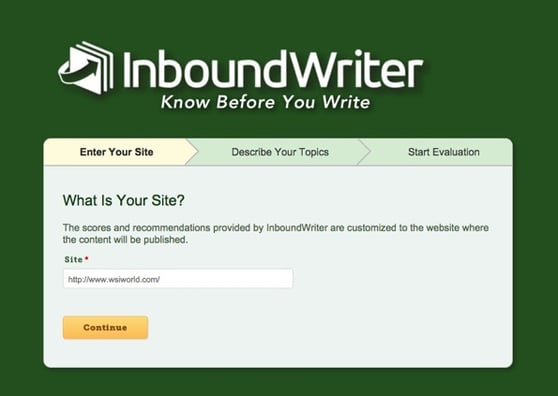As marketers, writers and designers, every time we set out to generate material for our brands, we arrive back at the same question: how do we create content that matters? In today's crowded digital world, there's as many good resources as bad, and the fear of creating content for the scrap heap often consumes us.
But be not afraid content mavens, wordsmiths and design wizards, there are ways to ensure you create content that matters. A while back, I was struggling to pull a topic out of the hat as my publish date hurtled toward me. So I did what any logical person does when they're stuck - I Google'd and social media'd until I found useful information (I also got sucked into a food board on Pinterest for a while, but hey, it was lunch time and I was hungry).
On this particular quest for knowledge, I stumbled upon a glorious revelation called Inbound Writer. A content creation tool, Inbound Writer projects the performance of a number of topics, thus helping you choose an optimal subject. Because let's be serious, it's not effective to write about every idea you have (there would be less content if more people followed this rule).
Here's a summary of how I used Inbound Writer to help me decide what to write about in a blog post back in March. I'll also take a look at how the post has performed and come to a conclusion on how effective Inbound Writer (and other tools like it) can be in helping you create meaningful content for your business.
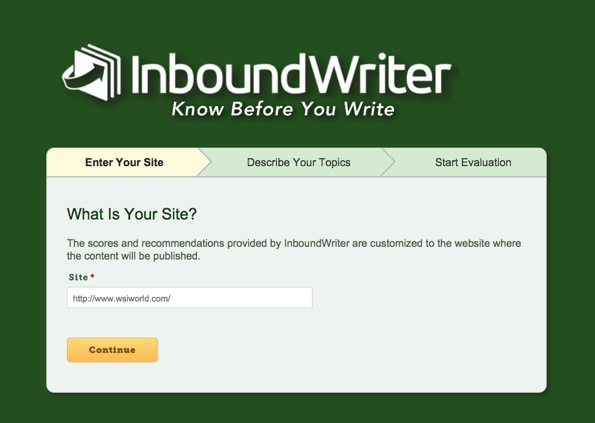
Anybody can try Inbound Writer for free (you just need to enter an email address), and I encourage you to give it a shot. The first step of the process is to enter your site as certain topics will perform better on one site than another; this makes sense but I'll admit it's something I've overlooked before. It'd be interesting to know what metrics Inbound Writer takes into account when projecting audience size and the potential reach of a given topic. Whether it's domain authority, social activity or reading level of a site's content, it's not a stretch to say, for example, that a granular technical post that succeeds on Moz's blog wouldn't do as well on the WSI blog.
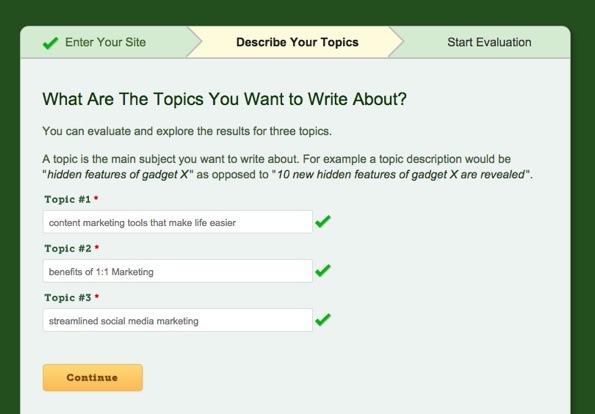
When I set out to write the my mid-winter post, I had three basic ideas: content marketing tools, 1:1 marketing (which was our topic of the month for March) and streamlined social media. The directions here are simple enough, but make sure you enter your topic and not your proposed title for the topic.
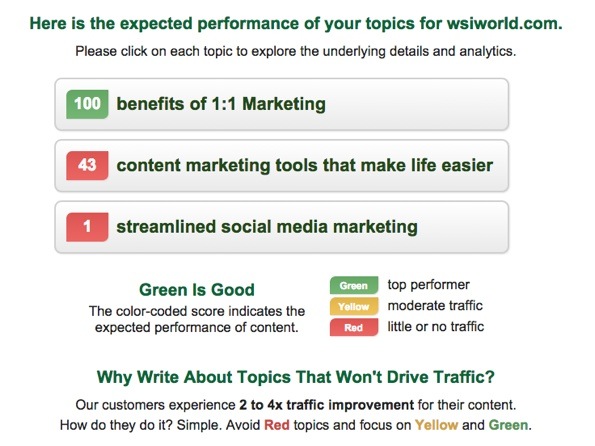
After you run the tool, you'll get a general score page that, if you're lucky like I was, will show you an obvious choice. For those who don't follow our blog (shame on you!), yes, I did write about 1:1 marketing. I was (and still am) all-in on this tool, though, so given these results, did I have any other choice? The only instructions are to avoid red topics, but if you get both a yellow and a green, are you ever going to choose green?
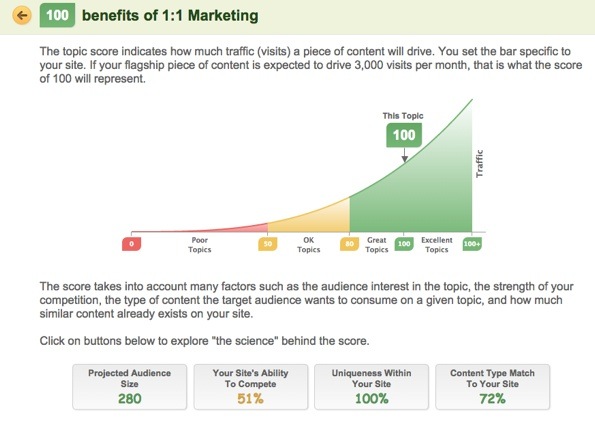
Here's where the tool's output becomes impressive. Once I opt to drill down into 1:1 marketing as a topic, there are projected metrics that indicate how much traffic this piece of content will drive, its projected audience size and your site's ability to compete with similar content. Of great interest (especially if you want to measure the effectiveness of Inbound Writer) is the topic score. In the above case the topic score showed me if a flagship piece of our content drives 3,000 visitors per month, that's the number a score of 100 is projecting.
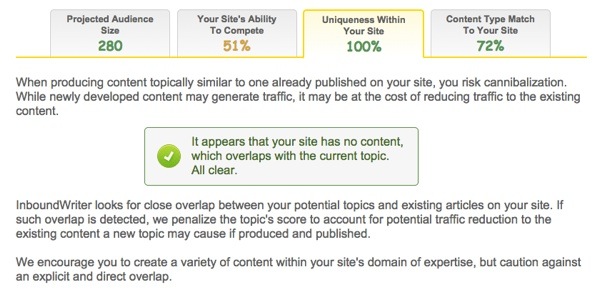
Each projection provides insight as to whether a piece of content will meet certain goals, too. For example if you're aiming to create a new and different kind of content that your site hasn't yet featured, consult the "Uniqueness Within Your Site Score." It's also helpful to understand cannibalizing your existing content with a topic too similar to a piece already published on your site. Inbound Writer penalizes a topic's score if the algorithm determines that it will reduce the traffic of an existing page.
At this point, my only question was" "What doesn't this tool do?" For starters, Inbound Writer doesn't write your posts for you, but it did provide me with enough insight to create a piece of meaningful content.
Did Inbound Writer Help Us Create Content That Matters?
The results of my Inbound Writer experiment are mixed - at least on the surface. Here's a snapshot of my 2015 in-depth blog posts and the traffic they generated over their first two months:

I say the results are mixed because the blog post for which I used Inbound Writer had fewer visits during its first month than the posts that came before it. Comparatively, it looks like Inbound Writer didn't work, but I don't believe that for a second. After all, Inbound Writer did project an accurate number of visitors and audience for the post.
Remember, the most useful aspect of Inbound Writer is its ability to help you determine the best topic among a series of topics. Perhaps I got lucky with my posts in January and February and hit on topics that Inbound Writer would have approved. If I hadn't used Inbound Writer, maybe I would have written on streamlined social media - the topic Inbound Writer scored a 1 - and received 60 visits for the month.
I consider all three of the posts in the chart a success, and Inbound Writer a definite part of my 1:1 marketing post's high performance (it's also a top 10 search result for 1:1 marketing).
Creating content that matters is a product of caring about creating content that matters. There are many tools - Inbound Writer being one - geared toward helping marketers and businesses build better content. Whether it's dedicated research, tools or a crack marketing team, if you're not writing off the top of your head or outsourcing to a cheap content mill, you are ahead of the game when it comes to creating content that matters.

